Best microphones for streaming in 2025: top picks for gaming and content creators
We've tested plenty of microphones, here are the best for streaming
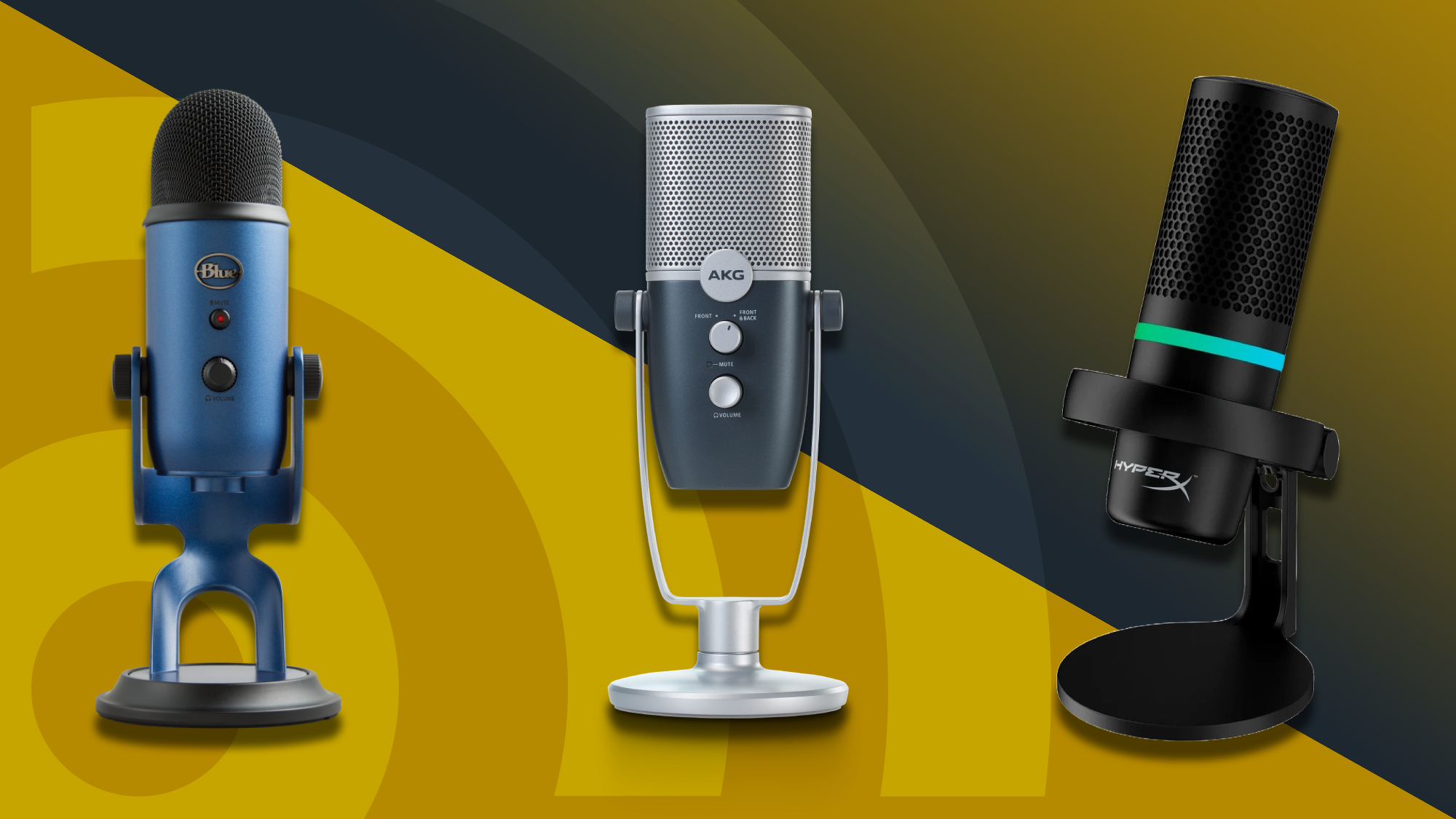
One of the best microphones for streaming could be a fantastic purchase if you want to level up your streaming setup in 2025. They're not only ideal if you want to give your viewers the best possible experience, but are also a top pick for gamers who want a capable mic for chatting with friends. They're even still worth investing in if you're already using a laptop or webcam with a built-in mic, as the quality offered by a standalone mic is almost always going to be superior.
That said, there are loads of microphones on the market right now that all offer their own unique sets of features. That's why I've put together this definitive microphone guide, based on my own hands-on testing and the work of the wider TechRadar team. I've considered all the most important factors here, including price, performance, compatibility, and, perhaps most significantly, whether they actually offer good value for money.
I've also kept the appearance of each model in mind, as how a microphone looks on camera is incredibly important if you want to look professional while using a face cam. I have even included a couple more premium options specifically geared towards those interested in other types of content creation, like podcasting or voice acting.
If you're looking to upgrade the rest of your streaming setup, I've got you covered with my dedicated guides to best webcams, the best green screens, and the best microphones for streaming.
Best microphones for streaming in 2025
Why you can trust TechRadar
Best overall
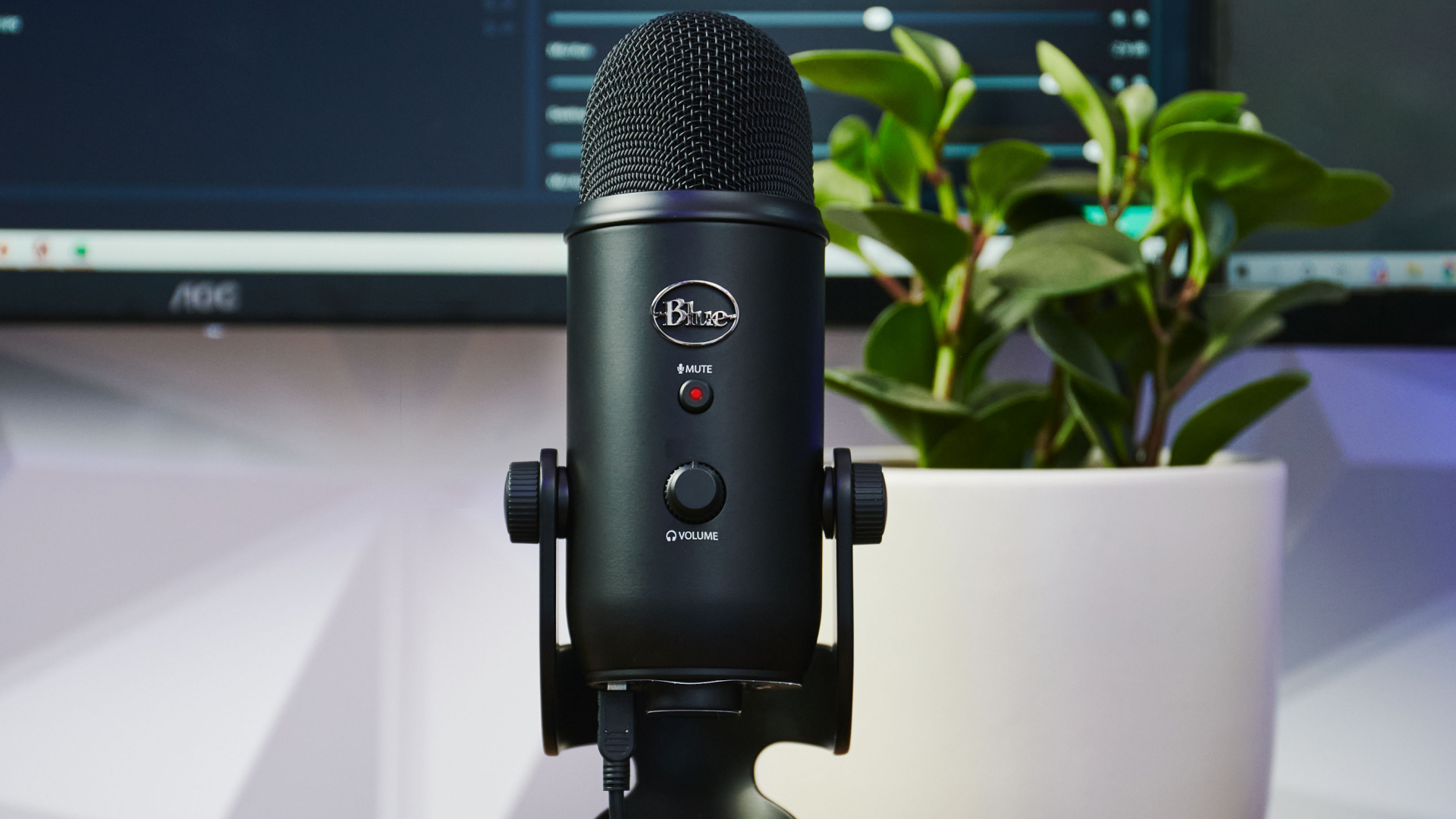
Specifications
Reasons to buy
Reasons to avoid
The Blue Yeti is an almost legendary microphone for streaming and for gaming and there’s a very good reason why it has such an esteemed reputation. For someone who is new to content creation, it is incredibly straightforward to set up and requires no additional software once it's plugged in. Even experienced content creators can appreciate its high reliability and charming design, however, making it an equally good option for those who have been streaming for awhile and want a high-quality microphone for a great price.
Our testing shows that the Blue Yeti delivers a consistently high audio quality while providing a number of convenient features to make your life a lot easier while streaming. This includes four different audio pickup patterns and the ability to mount it to almost any mic stand in order to ensure that it’s always at the best position to pick up your voice while you stream.
There are some downsides to this model though, including the fact that the Blue Yeti can occasionally pick up any keyboard sounds or background noise if you’re in a particularly loud environment thanks to its high sensitivity. Thumps or movements around your desk are bound to be picked up without careful tweaking, but this is to be expected given the lower price of this microphone. For $129.99 / £119.99 / AU$199.95, there’s a lot to admire here and you certainly won’t be financially recovering before you begin your streaming journey.
- Read more: Blue Yeti review
Best budget
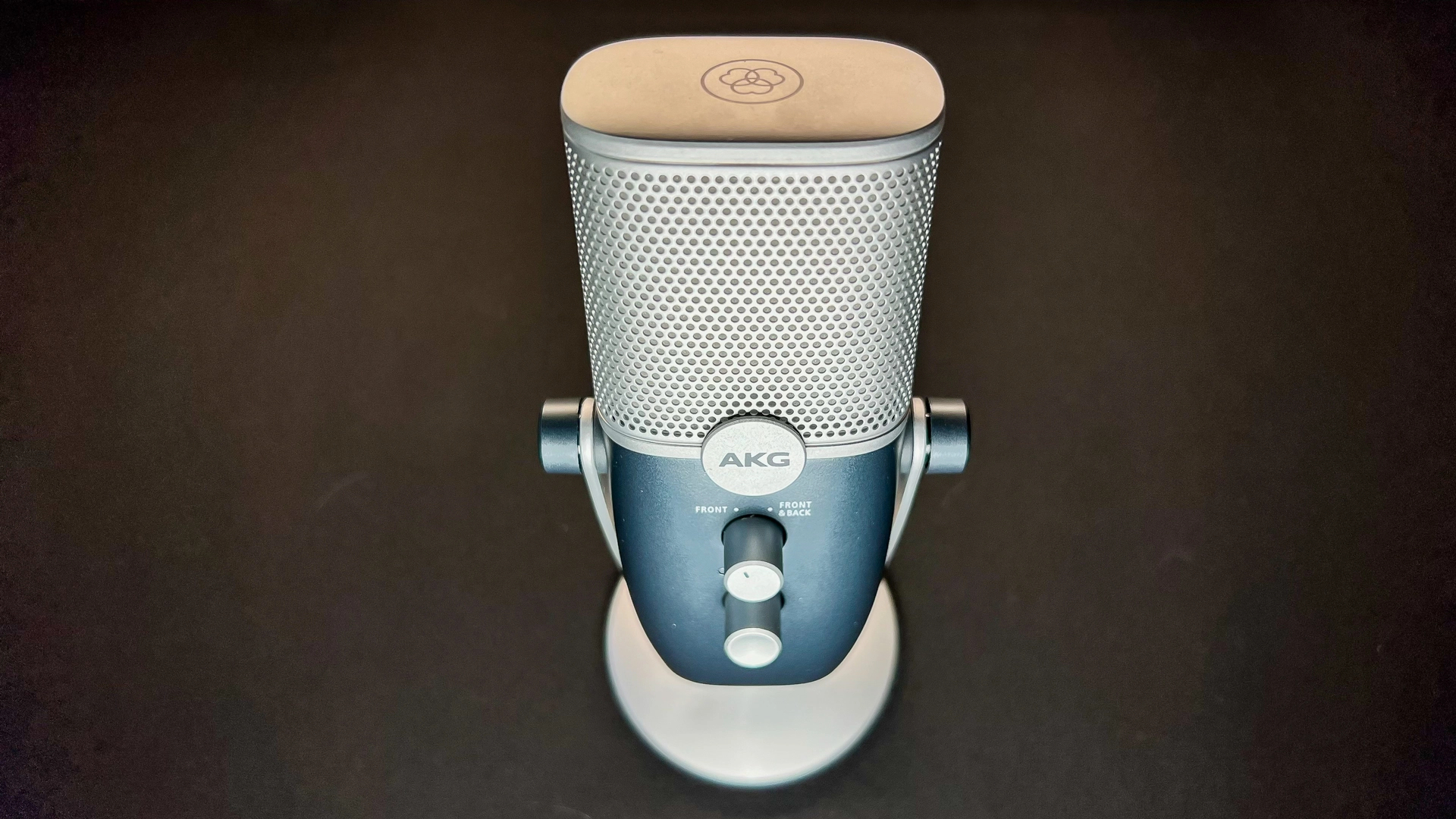
Specifications
Reasons to buy
Reasons to avoid
At first glance, it might be a little difficult to tell what sets the AKG Ara apart from other budget USB microphones. However, we believe that the strong plug-and-play performance firmly sets it apart from the rest of the pack. The main appeal of the AKG Ara is the quality that you’re getting compared to some similarly priced alternatives.
The entire product has a fairly sturdy build that should ensure that it’s protected from any serious damage if it is subject to any unfortunate bumps or scrapes. As with other budget microphones, however, the AKG Ara is prone to picking up background noise. While this is easy to mitigate with software, it might not be ideal if you frequently bump your desk or move things around during a stream.
This fact is especially worth considering if you stream in a tight space where you're most likely to be making extra noise. In spite of this, for just $99 / £69 / AU$120 you’re buying a remarkably solid microphone with clear audio that is going to be ready to use out of the box the moment it arrives.
- Read more: AKG Ara review
Best premium
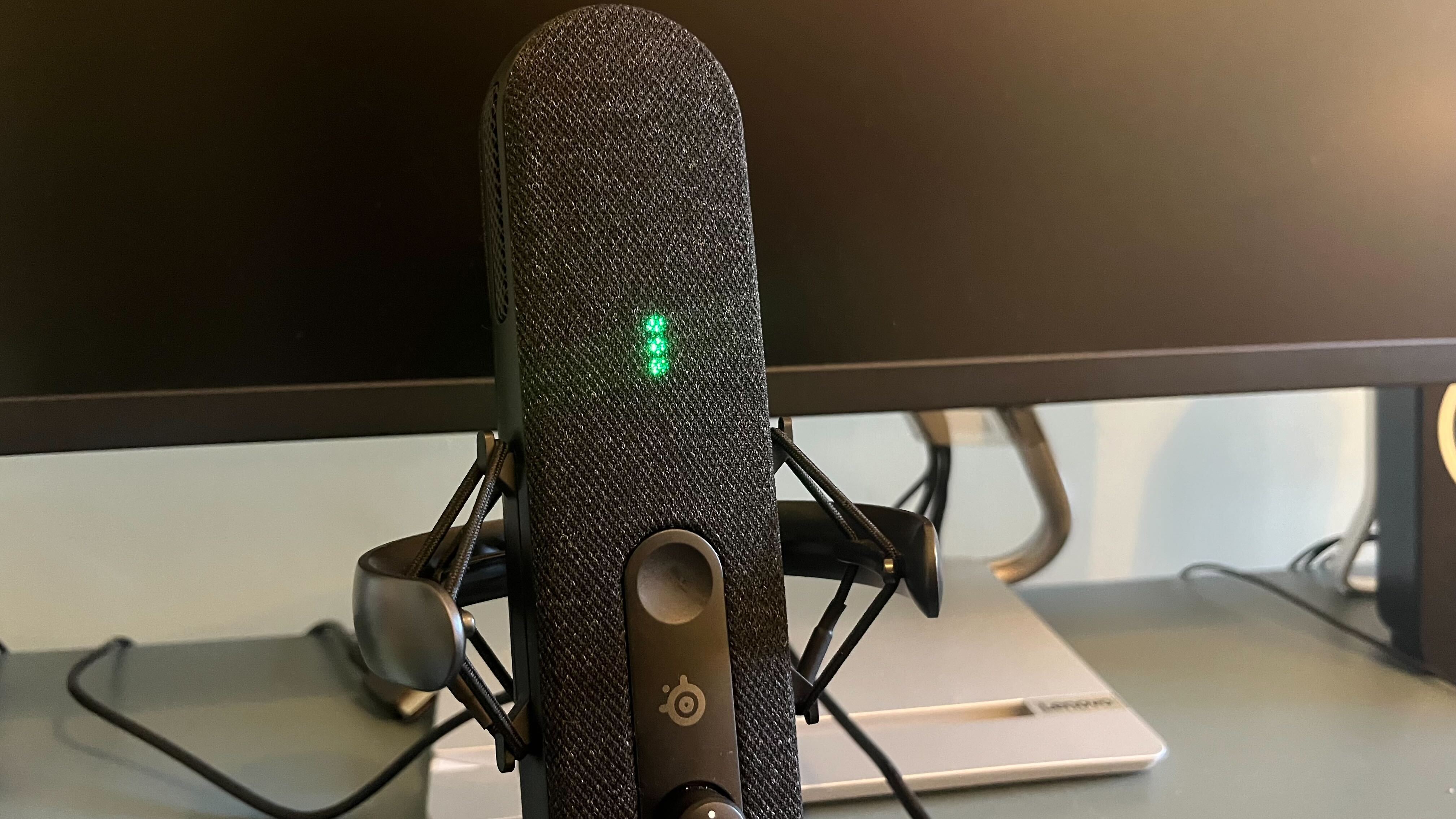
Specifications
Reasons to buy
Reasons to avoid
No other models on this list offer the same level of flair as the SteelSeries Alias, a seriously premium gaming microphone from the well-regarded peripheral manufacturer SteelSeries. Its attractive design is extremely appealing and sure to enhance the look of your streaming setup.
The microphone features an incredibly useful LED display that indicates your current gain level. It flashes red when it exceeds your desired level, making it easy to stay within range and deliver the best possible audio experience to your viewers. It also provides a useful visual indicator to show when the microphone is muted, controlled via a convenient touch sensitive button on the front of the capsule, offering additional peace of mind. Elsewhere, you’re getting a small ring of RGB lighting and an easily accessible gain dial.
All of this comes in materials that feel extremely high-end and the audio quality offers good performance to match. While the clear and clean sound of the Alias is comparable to some of the cheaper models on this list (like the Blue Yeti after some software tweaking) it is able to deliver it out of the box with such fantastic presentation that we think more than justifies the additional cost. If you have the cash to invest in a premium option, this is one of the best around.
- Read more: SteelSeries Alias review
Best RGB
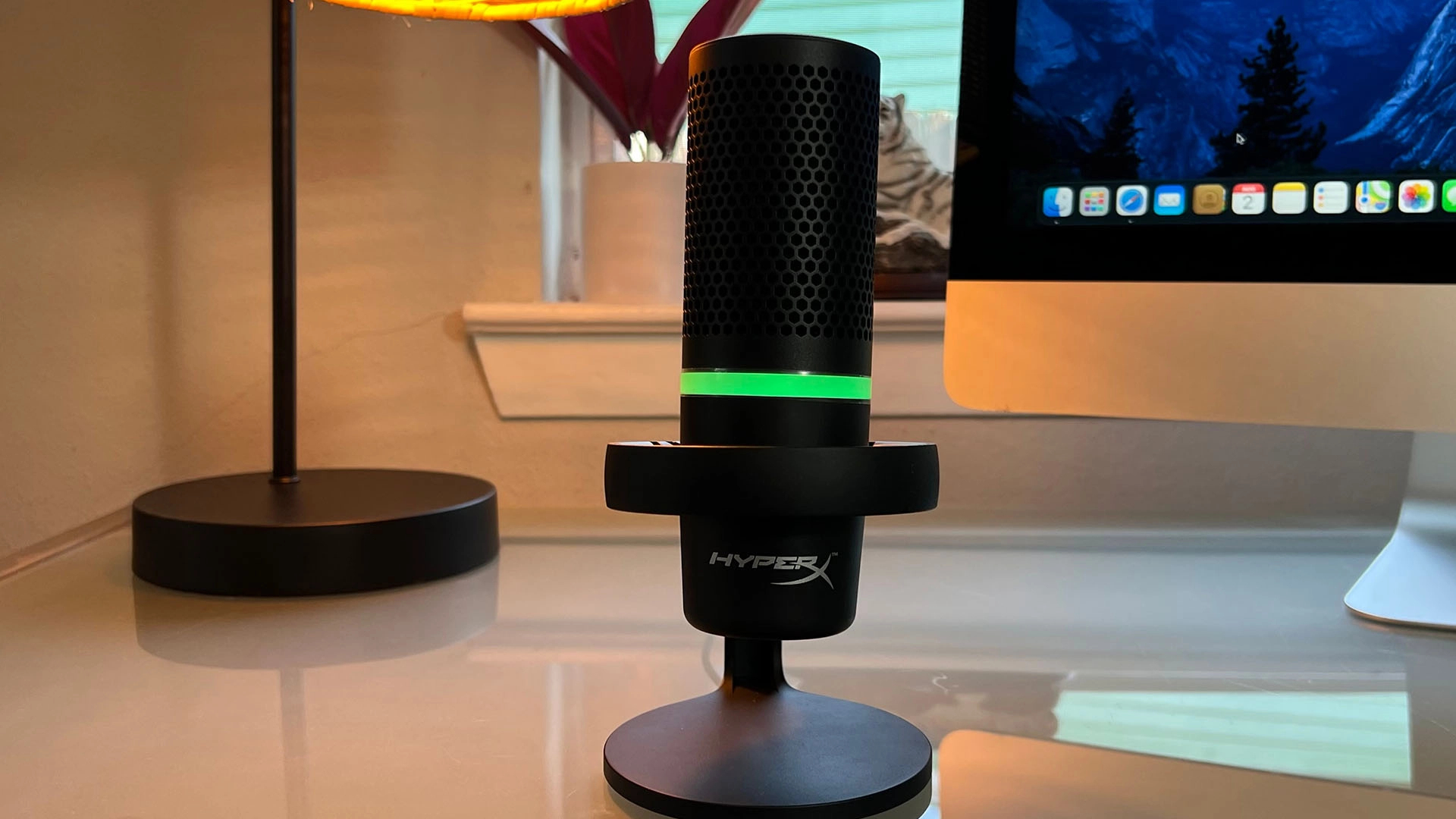
Specifications
Reasons to buy
Reasons to avoid
The HyperX DuoCast is one of the most eye-catching microphones on the market, thanks in no small part to the highly customizable RGB ring around the base of the microphone. In addition to looking the part thanks to the colorful lighting ring, it sounds great and delivers clear high-quality audio alongside a host of convenient features like a speedy tap-to-mute button - which can be a real life saver in the middle of a stream. There is also a useful gain control dial to help you tweak your settings while streaming.
Packed in alongside a tabletop shock mount (to help prevent unwanted noise) and boom arm attachment, you’re buying an entire setup rather than just a microphone, which should substantially cut down your need to spend on other accessories. Whether all of this justifies the $99.99 / £99.98 / AU$179 price is going to depend on your budget and preferences but, if you're shopping solely for a microphone with good RGB lighting, this is one of your best options right now.
- Read more: HyperX DuoCast review
Best mid-range
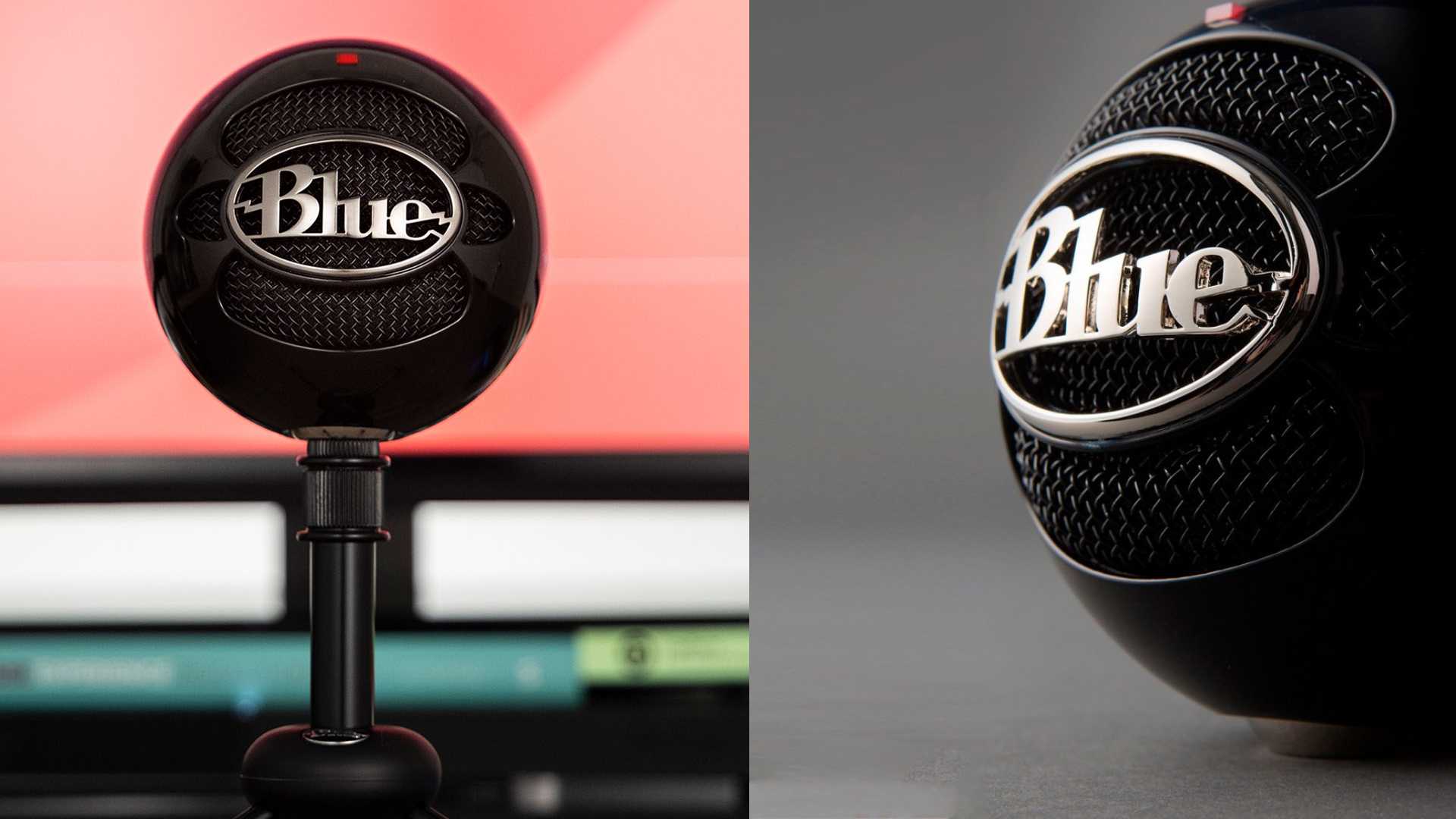
Specifications
Reasons to buy
Reasons to avoid
The Blue Snowball is the perfect fit for a new streamer or someone looking to upgrade their current setup without breaking the bank. It is incredibly easy to set up as far as microphones go thanks to its plug-and-play design, which means that it is good to go straight out of the box without having to worry about any additional software. The Snowball mic costs £74.99 / $69.99 / AU$195.25, which isn’t a lot when you consider the unique design and the level of quality on offer.
The Blue Snowball also comes equipped with three distinct audio pickup patterns, which provide a good degree of flexibility and should ensure that you stay heard in a range of different positions The Cardioid mode focuses on capturing a single voice from the front, making it perfect for a solo stream. The Omnidirectional mode, on the other hand, picks up noise in a roughly spherical pattern making it also ideal for group streams or podcasts. Few other microphones at this price point offer a similar level of versatility.
- Read more: Blue Snowball review
Best compact
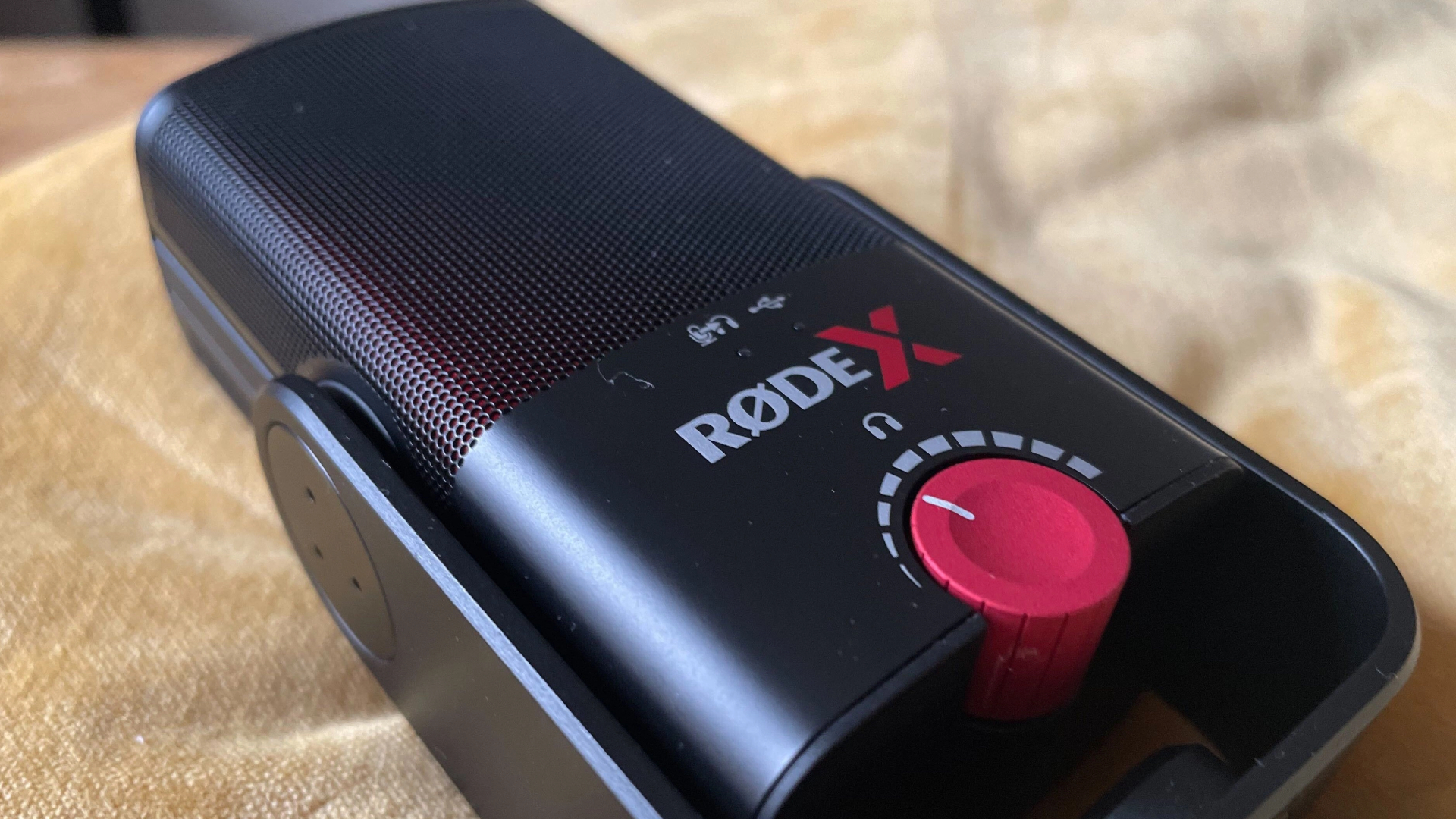
Specifications
Reasons to buy
Reasons to avoid
The Rode X XCM-50 is part of Rode's gaming range and therefore specifically tailored mic for streamers and gamers. It delivers clear, detailed audio to both your audience and your teammates and, when paired with the accompanying Unify software, grants an additional degree of control over your overall audio levels. Its compact design is also seriously small, letting you save space on your desk and helping create a cleaner looking setup than most.
The microphone's sensitivity also means you don’t need to get super close in order to guarantee rich and clear audio. The desktop tripod the microphone ships with is incredibly easy to set up and will likely suit any streamer if you don’t have access to a boom arm. Despite the small size of the microphone itself, however, the tripod is quite large so it is worth factoring in if you are only considering the Rode X XCM-50 because of its low profile design. The Rode X XCM-50 is also more expensive than many alternative USB microphones and, with a £170 / $249 / AU$239 asking price, this is one that we recommend to professional content creators rather than those just starting out.
- Read more: Rode X XCM-50 review
Best mobile
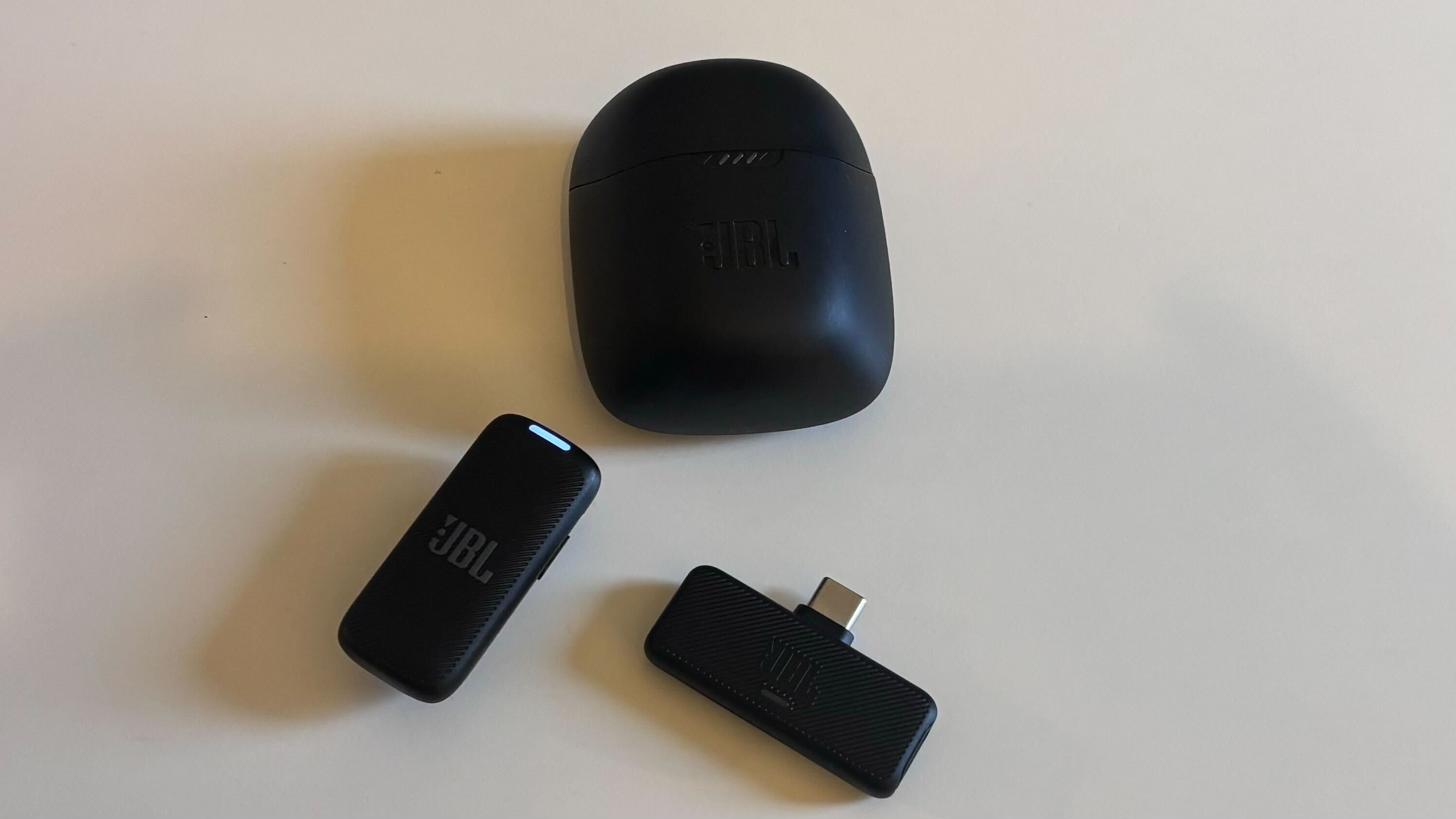
Specifications
Reasons to buy
Reasons to avoid
If you're looking for a compact microphone to bring to your next gaming event, or perhaps something to stream directly from our mobile phone on platforms like Instagram and TikTok, then you should definitely consider the JBL Quantum Stream Wireless. It's relatively affordable compared to other mobile microphone options and performs very well given its size.
It's super compact, with a wireless earbud like case that can be used to recharge the mic. You get roughly six hours of battery per use, with an additional 18 in the charging case which is more than enough for an entire day. There are both USB-C and Lightning versions available too, which means that it is very likely to be compatible with your phone. It has a great app with plenty of features to boot, including AI noise cancellation.
The JBL Quantum Stream Wireless is also compatible with PCs or laptops, in addition to the JBL Quantum Engine PC software, but it is worth bearing in mind that many of the desktop options on this list offer far better audio quality. The microphone comes packaged with a removable windshield too, though I found that it was quite fiddly to use while out and about.
- Read more: JBL Quantum Stream Wireless review
FAQs
Are USB microphones good for streaming?
Generally speaking, a good quality USB microphone will be more than enough for streaming on a range of popular platforms like Twitch or YouTube. While an XLR setup with a dedicated DAC may sound better for recording videos or podcasts, much of the difference is lost while streaming when you consider the limitations of audio encoding on most streaming services.
Is it best to have a condenser mic for streaming?
Selecting the best microphone for you depends a lot on your setup and surroundings. If you’re streaming in an environment where there is little to no background noise, a condenser microphone will likely provide the best audio in comparison to other options. If there is a lot of background noise where you stream, however, consider a dynamic microphone instead.
Are there any disadvantages to a condenser mic?
The main disadvantage of a condenser microphone is the fact that it is more susceptible to background noise in comparison to a dynamic microphone. A cheaper condenser microphone may also become susceptible to picking up internal electronic noise over time, eventually producing a slight hiss or buzz in the background of your audio while it is being used.
Is a streaming microphone good for multiplayer gaming?
Generally speaking, any microphone that is a good choice for streaming will also be a good choice for more general multiplayer gaming. Some of the entries on this list, like the Blue Yeti, are already popular options for gamers on top of streamers. That said, you should definitely be careful when it comes to higher-end models like the Audio-Technica AT2020USB-X. As these are most geared towards professional content creation, most gamers will not end up using a lot of their expensive features.
Sign up for breaking news, reviews, opinion, top tech deals, and more.

Dash is an experienced tech journalist who currently serves as the Gaming Editor at TechRadar, where he helps oversee coverage of video games and related products.
Before joining the team, he was Contributing Writer at PLAY (formerly Official PlayStation Magazine) and has also written articles for many of the UK's biggest gaming magazines including Edge, PC Gamer, and SFX.
Now, when he's not getting his greasy little mitts on the newest hardware or gaming gadget, he can be found listening to J-pop or feverishly devouring the latest Nintendo Switch otome.
- Kara PhillipsEvergreen Writer
- Aleksha McLoughlinContributor